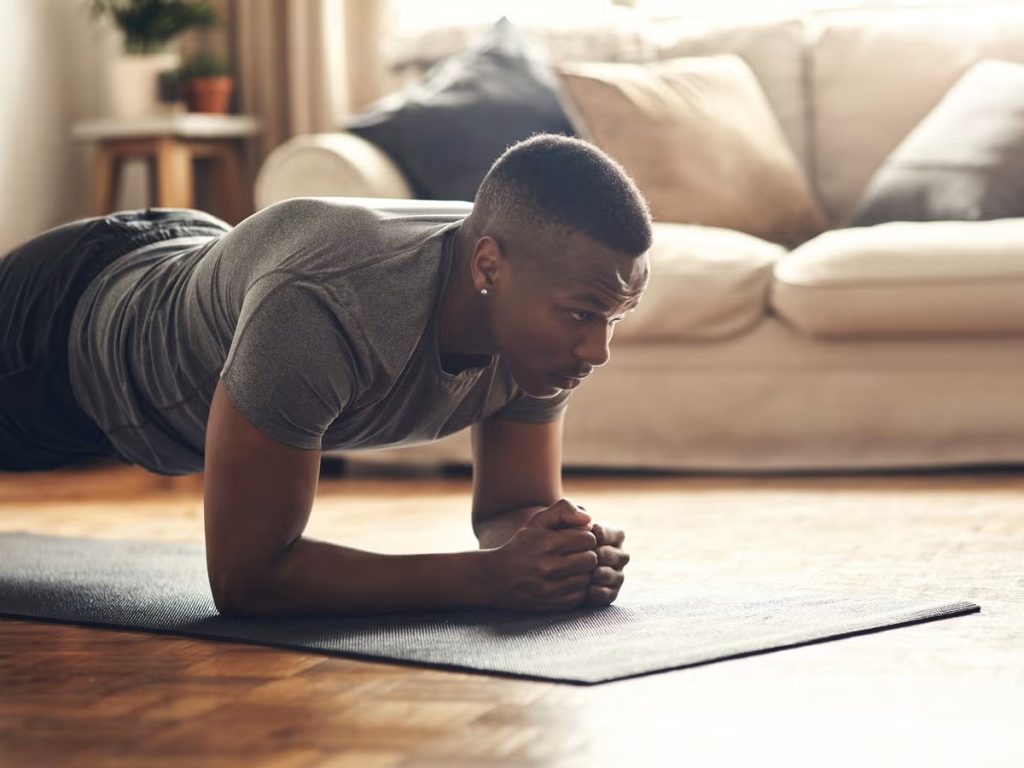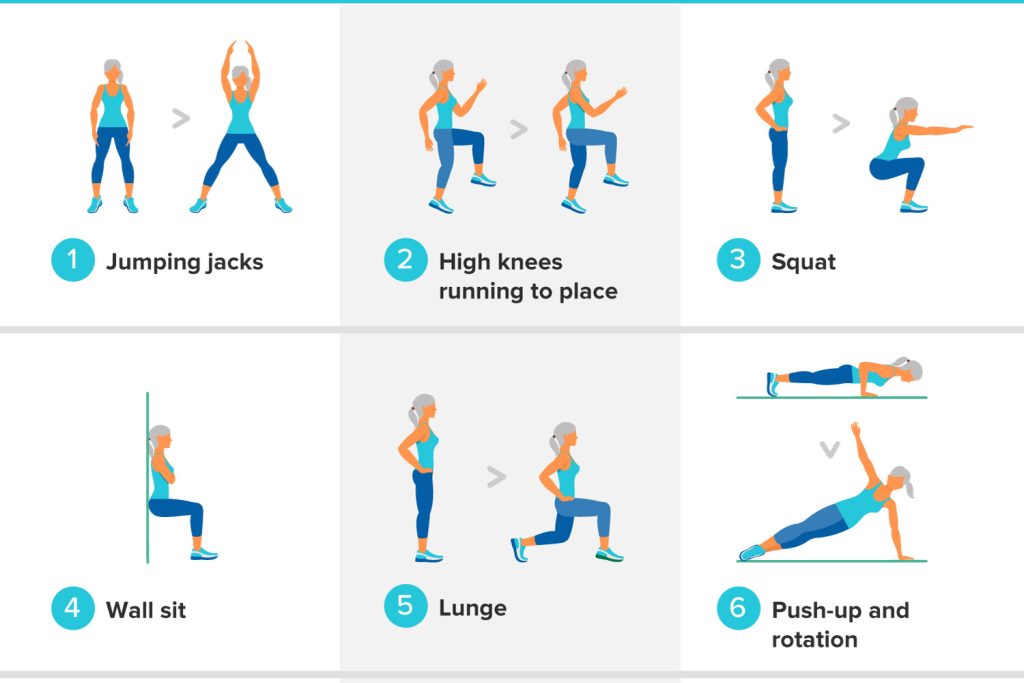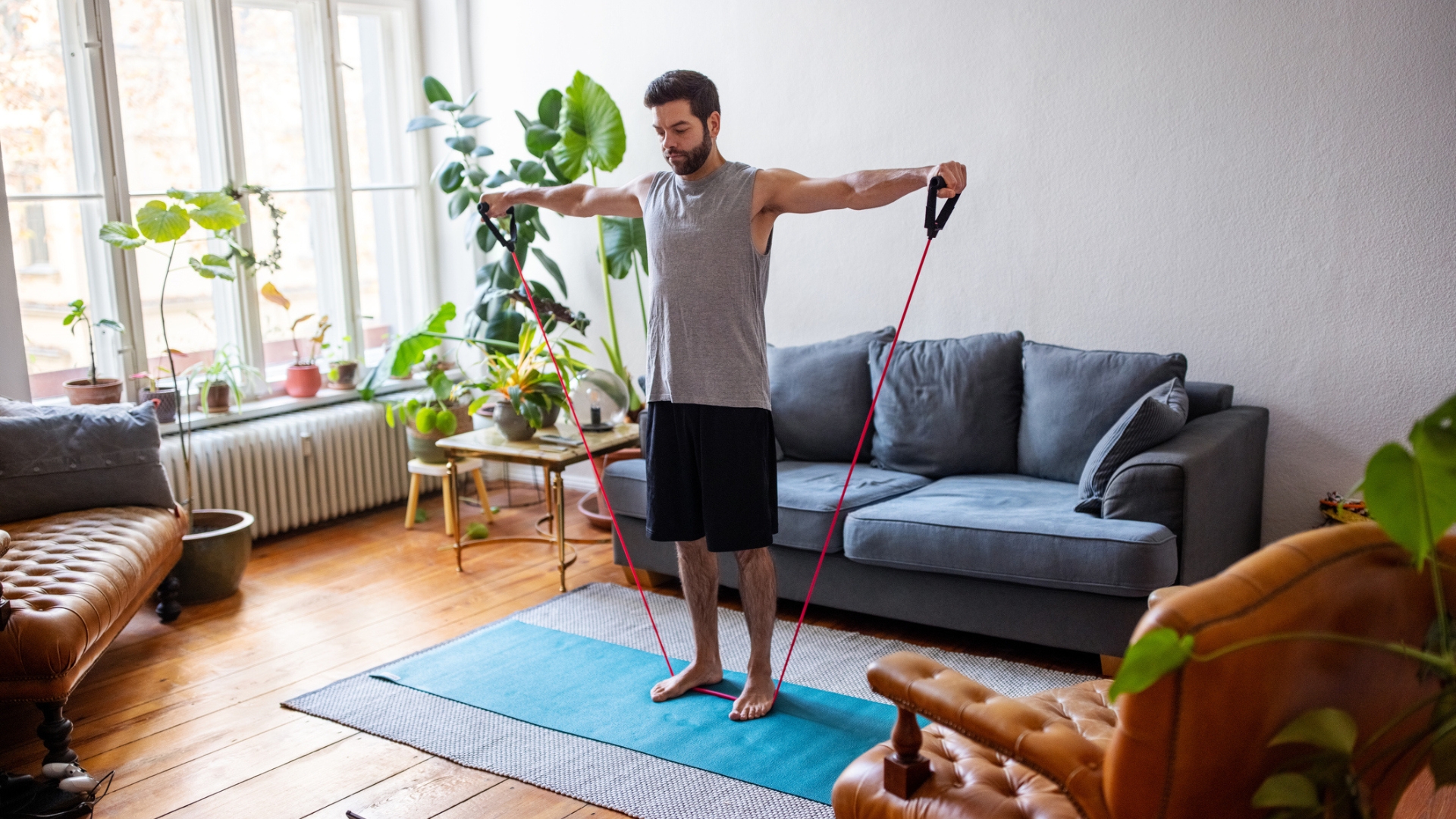Struggling to find time for the gym? You’re not alone. Between work, family, and daily responsibilities, fitting in a workout can feel impossible. The good news is that you don’t need a gym membership or hours of free time to get an effective workout. With these 15-minute HIIT workouts designed for your living room, you can torch calories, build strength, and boost your fitness level right from home.
What Makes HIIT So Effective for Home Workouts?
High-Intensity Interval Training (HIIT) alternates between short bursts of intense exercise and brief recovery periods. This approach maximizes calorie burn in minimal time while continuing to burn calories hours after your workout ends – a phenomenon known as the “afterburn effect” or EPOC (Excess Post-Exercise Oxygen Consumption).
Research shows that just 15 minutes of HIIT can be as effective as 45 minutes of steady-state cardio for fat loss and cardiovascular improvement. This makes it perfect for busy schedules and small spaces like your living room.
Benefits of 15-Minute Home HIIT Workouts
Time Efficient: Get maximum results in minimal time – perfect for busy lifestyles.
No Equipment Needed: Use your body weight for resistance, eliminating the need for expensive gym equipment.
Versatile: Easily modify exercises based on your fitness level and available space.
Metabolism Boost: Continue burning calories up to 24 hours after your workout.
Convenience: Work out anytime, anywhere, without commuting to a gym.
Essential Tips Before You Start
Warm-Up is Crucial: Always spend 2-3 minutes warming up with light movements like arm circles, leg swings, and gentle stretching.
Listen to Your Body: HIIT is intense. If you’re new to exercise, start with longer rest periods and gradually decrease them as you build endurance.
Focus on Form: Quality over quantity. Proper form prevents injury and ensures you’re targeting the right muscles.
Stay Hydrated: Keep water nearby and sip between exercises.
Cool Down: End each workout with 2-3 minutes of stretching to help your body recover.

Workout 1: The Fat Burner (15 Minutes)
Structure: 45 seconds work, 15 seconds rest, repeat each exercise twice before moving to the next.
Round 1 (8 minutes)
- Jumping Jacks: Classic cardio move that gets your heart pumping while working your entire body.
- Bodyweight Squats: Target your glutes, quads, and core while building lower body strength.
- Push-Ups (modify on knees if needed): Build upper body and core strength.
- High Knees: Boost your heart rate while improving coordination and leg strength.
Round 2 (7 minutes)
- Burpees (modify by stepping back instead of jumping): Full-body exercise that combines cardio and strength.
- Mountain Climbers: Core-focused exercise that also elevates heart rate.
- Plank Hold: Build core stability and endurance.
- Butt Kicks: Light cardio recovery while keeping your heart rate elevated.
Workout 2: The Strength Builder (15 Minutes)
Structure: 40 seconds work, 20 seconds rest, complete all exercises then repeat the entire circuit.
Circuit (repeat 2-3 times)
- Squat to Calf Raise: Combines lower body strength with balance and coordination.
- Pike Push-Ups: Target shoulders and upper chest while building core stability.
- Reverse Lunges (alternate legs): Build single-leg strength and improve balance.
- Bear Crawl Hold: Full-body exercise focusing on core stability and shoulder strength.
- Jump Squats: Explosive lower body movement for power and cardio.
Workout 3: The Core Crusher (15 Minutes)
Structure: 30 seconds work, 10 seconds rest, complete all exercises then repeat.
Circuit (repeat 3 times)
- Bicycle Crunches: Target obliques and rectus abdominis.
- Plank to Downward Dog: Dynamic core exercise with shoulder mobility.
- Russian Twists: Focus on obliques and rotational core strength.
- Dead Bug (alternate sides): Core stability exercise that’s gentle on the back.
- Leg Raises: Target lower abdominals.
- Wall Sit: Isometric exercise for legs while allowing core recovery.
Workout 4: The Cardio Blast (15 Minutes)
Structure: 20 seconds all-out effort, 10 seconds rest (Tabata style), 8 rounds per exercise.
Exercise Block 1 (4 minutes)
- Exercise: Squat Jumps
- Focus: Explosive lower body power and cardiovascular endurance
Exercise Block 2 (4 minutes)
- Exercise: Modified Burpees (step back instead of jump)
- Focus: Full-body conditioning
Exercise Block 3 (4 minutes)
- Exercise: High Knees
- Focus: Cardiovascular endurance and leg strength
Cool Down (3 minutes)
Light stretching focusing on major muscle groups worked.
Making the Most of Your Living Room Space
Clear Your Area: Ensure you have at least 6×6 feet of clear space for safe movement.
Use What You Have: Coffee tables can serve as step-ups, walls for wall sits, and couches for incline push-ups.
Consider Your Neighbors: If you live in an apartment, opt for modifications that reduce jumping and loud impacts.
Ventilation: Open windows or use a fan to maintain comfortable temperature during intense workouts.
Progression and Modifications
For Beginners:
- Start with 30 seconds work, 30 seconds rest
- Modify high-impact moves (step instead of jump)
- Take additional rest if needed
- Focus on 2-3 workouts per week
For Advanced:
- Increase work intervals to 50-60 seconds
- Decrease rest periods to 10 seconds
- Add resistance with water bottles or books
- Combine workouts for 30-minute sessions
- Aim for 4-5 workouts per week
Common Mistakes to Avoid
Skipping Warm-Up: Always prepare your body for intense exercise to prevent injury.
Poor Form for Speed: Maintaining proper form is more important than completing more repetitions.
Not Pushing Hard Enough: HIIT should feel challenging. If you can easily hold a conversation, increase intensity.
Inconsistent Schedule: Aim for at least 3 sessions per week for optimal results.
Ignoring Recovery: Your body needs time to repair and adapt between sessions.

Tracking Your Progress
Keep a simple workout log noting:
- Which workout you completed
- How you felt during and after
- Any modifications you made
- Your energy level throughout the day
This helps you identify patterns and celebrate improvements in endurance, strength, and overall fitness.
Creating Your Weekly Schedule
Monday: Fat Burner Workout Tuesday: Active recovery (light stretching or walk) Wednesday: Strength Builder Workout Thursday: Active recovery Friday: Core Crusher Workout Saturday: Cardio Blast or combine two shorter workouts Sunday: Complete rest or gentle yoga
Conclusion
These 15-minute HIIT workouts prove that effective fitness doesn’t require a gym membership or hours of your time. By committing to just 15 minutes a day, three to four times per week, you can achieve significant improvements in cardiovascular health, strength, and body composition.
The beauty of home HIIT workouts lies in their adaptability. Whether you’re a complete beginner or seasoned athlete, these routines can be modified to match your fitness level and continue challenging you as you progress.
Remember, consistency beats perfection. It’s better to complete a 15-minute workout regularly than to plan hour-long sessions that you never actually do. Start with one workout, master the movements, and gradually add more sessions to your weekly routine.
Your living room is now your personal gym, and these 15-minute HIIT workouts are your key to unlocking better health, increased energy, and improved fitness – no commute required.
